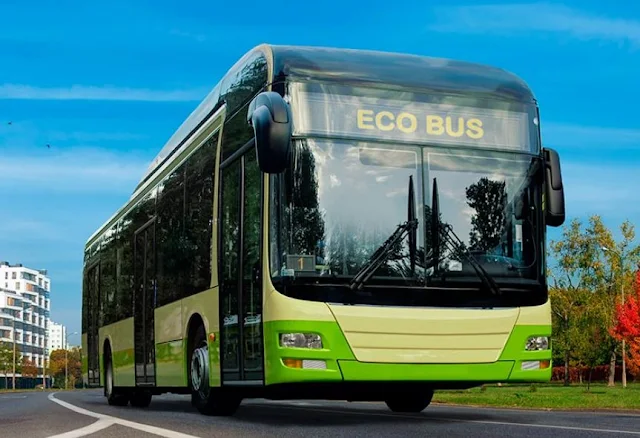Introduction Best Practise for Sustainable transportation City
When it comes to best practices for sustainable transportation cities, several cities have implemented innovative strategies to promote sustainable transportation.
While there isn't a single "best" practice that fits every city, here are some notable examples of sustainable transportation practices that cities have adopted:
1. Comprehensive Cycling Infrastructure
Cities like Copenhagen and Amsterdam have invested in extensive cycling infrastructure, including dedicated bike lanes, bike parking facilities, and traffic-calming measures. Creating a safe and convenient cycling network encourages more people to choose bicycles as a mode of transport.
2. Integrated Public Transportation
Implementing an integrated public transportation system that combines various modes such as buses, trams, light rail, and subways is crucial for seamless travel. Cities like Singapore and Hong Kong have efficient and well-connected public transportation networks that offer easy transfers and multi-modal ticketing options.
3. Car-Free Zones and Pedestrianization
Designating car-free zones and pedestrianized areas in city centers can enhance walkability, reduce traffic congestion, and improve air quality. Examples include pedestrian-only zones in Strasbourg, France, and car-free cities like Vauban in Germany.
4. Sustainable Urban Planning:
Cities that prioritize sustainable urban planning principles consider mixed land-use development, compact city design, and the integration of residential, commercial, and recreational areas. Curitiba, Brazil, is known for its Bus Rapid Transit (BRT) system and land-use planning that focuses on reducing urban sprawl.
5. Smart Transportation Systems
Utilizing smart transportation systems and technologies can optimize traffic flow, improve transportation efficiency, and reduce emissions. Singapore is a leader in implementing intelligent transportation systems, including real-time traffic monitoring, smart traffic signals, and congestion pricing.
6. Electrification of Transportation
Encouraging the adoption of electric vehicles (EVs) by developing charging infrastructure and providing incentives has become a common practice in sustainable transportation cities. Oslo, Norway, has made significant progress in promoting EVs and aims to phase out fossil fuel-powered vehicles entirely.
7. Active Transportation Promotion:
Cities that actively promote active transportation, such as walking and cycling, through education campaigns, incentives, and infrastructure improvements, help reduce car usage and emissions. Bogotá, Colombia, is known for its weekly Ciclovía events, where streets are closed to vehicles, allowing residents to engage in physical activity.
8. Sustainable Freight and Delivery Solutions
Implementing sustainable freight and delivery solutions, such as consolidating deliveries, optimizing routes, and encouraging the use of low-emission vehicles, helps reduce congestion and emissions. Freight initiatives in cities like London and Stockholm promote greener logistics practices.
9. Multi-Modal Integration
Integrating different modes of transportation seamlessly is crucial for encouraging sustainable transportation. Cities like Vienna, Austria, have developed multi-modal transportation hubs that facilitate transfers between public transportation, cycling, and walking.
10. Participatory Decision-making
Engaging the community and involving stakeholders in decision-making processes related to sustainable transportation is vital. Cities like Portland, Oregon, prioritize community involvement and collaboration to ensure transportation solutions meet the needs of residents.
These practices serve as examples of what cities can do to promote sustainable transportation. However, the most effective approaches will depend on the unique characteristics and context of each city, and a combination of strategies may be necessary to achieve a sustainable transportation system.
Sustainabile Transportation City
Three cities that are widely recognized as leaders in sustainable transportation are:
1. Amsterdam, Netherlands
Amsterdam is renowned for its extensive cycling infrastructure and strong cycling culture. The city boasts a comprehensive network of bike lanes, traffic-calmed streets, and bike parking facilities, making it incredibly convenient and safe for cyclists. Amsterdam also has an efficient public transit system, including trams and buses, that provide excellent coverage and accessibility. The city's commitment to sustainable transportation has resulted in a significant reduction in car usage and congestion, while promoting active mobility and a high quality of life for its residents.
2. Curitiba, Brazil
Curitiba is often hailed as a pioneer in sustainable urban planning and transportation. The city implemented a groundbreaking bus rapid transit (BRT) system known as the "Rede Integrada de Transporte," which has become a model for other cities worldwide. The BRT system features dedicated bus lanes, pre-paid boarding, and well-designed stations, providing efficient and affordable public transportation to residents. Curitiba also prioritizes pedestrian-friendly infrastructure, with wide sidewalks, pedestrian-only streets, and green spaces, creating a pleasant and walkable urban environment.
3. Portland, United States
Portland is widely regarded as a leader in sustainable transportation in North America. The city has made significant investments in cycling infrastructure, with an extensive network of bike lanes, paths, and bridges, encouraging active transportation. Portland also boasts a comprehensive public transit system, including light rail (MAX), streetcars, and buses, offering convenient and accessible options for commuting. The city's commitment to sustainable transportation is further exemplified by its land use planning, which promotes compact development, mixed-use neighborhoods, and transit-oriented development, reducing reliance on private vehicles and promoting alternative modes of transport.
These three cities have demonstrated a strong commitment to sustainable transportation through their investments in cycling infrastructure, efficient public transit systems, and pedestrian-friendly urban planning.
They serve as inspiring examples for other cities striving to create greener, more accessible, and people-centric transportation systems.



